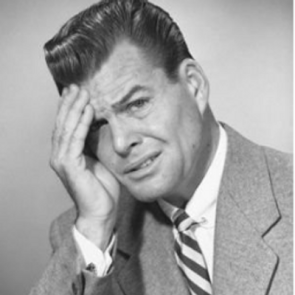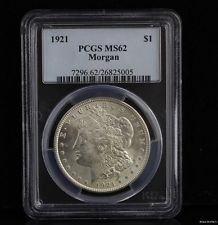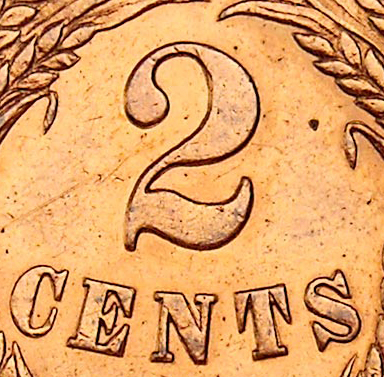 The general overview is coins are graded on a 1-70 scale with a 1 being a virtually unidentifiable metal disc, and a 70 being the most perfect thing the mint can produce. There are also sub categories the most significant of which is for uncirculated or “mint state” coins, and they start at the grade of 60. Everything below is for circulated coins. Don’t be dissuaded by the complexity of this, however. There are easy ways for the beginner to get around this hurdle.
The general overview is coins are graded on a 1-70 scale with a 1 being a virtually unidentifiable metal disc, and a 70 being the most perfect thing the mint can produce. There are also sub categories the most significant of which is for uncirculated or “mint state” coins, and they start at the grade of 60. Everything below is for circulated coins. Don’t be dissuaded by the complexity of this, however. There are easy ways for the beginner to get around this hurdle. For the “hole-filler” (a collector filling the date and mint mark holes in coin books) it is to your benefit to buy low grade or even damaged coins. These are coins that can be handled without devaluing them. Just the act of pressing a coin into it’s respective hole can leave a fingerprint or a scratch. You don’t want to do that to a high dollar or delicate high condition coin. Also, most coin books or folders have cardboard cores that are acid treated. This acid over a period of years or decades can change the color of a coin (a process known as toning), sometimes yielding unfortunate results. There are a couple of key advantages to this type of collecting. One is that the coins that you’re looking for are inexpensive, the other is that there are a lot of them out there in the world. It doesn’t take long when looking at all of the coins in your favorite series to see that there will be at least a few key date coins. Key date coins are usually the lowest mintage, and therefore the rarest and most expensive. These, as with virtually all coins, can be obtained in low or damaged condition, however, even in these conditions are still quite expensive. Buying coins of this nature, one runs the risk of purchasing a counterfeit coin. To avoid this, it’s best to leave the hole unfilled and step into the realm of the investment oriented collector.
For the “hole-filler” (a collector filling the date and mint mark holes in coin books) it is to your benefit to buy low grade or even damaged coins. These are coins that can be handled without devaluing them. Just the act of pressing a coin into it’s respective hole can leave a fingerprint or a scratch. You don’t want to do that to a high dollar or delicate high condition coin. Also, most coin books or folders have cardboard cores that are acid treated. This acid over a period of years or decades can change the color of a coin (a process known as toning), sometimes yielding unfortunate results. There are a couple of key advantages to this type of collecting. One is that the coins that you’re looking for are inexpensive, the other is that there are a lot of them out there in the world. It doesn’t take long when looking at all of the coins in your favorite series to see that there will be at least a few key date coins. Key date coins are usually the lowest mintage, and therefore the rarest and most expensive. These, as with virtually all coins, can be obtained in low or damaged condition, however, even in these conditions are still quite expensive. Buying coins of this nature, one runs the risk of purchasing a counterfeit coin. To avoid this, it’s best to leave the hole unfilled and step into the realm of the investment oriented collector.The mantra of the investment oriented collector is “always buy certified coins.” A certified coin is one that has been graded by an expert grader at a third party grading service. A coin that is not certified in known as a raw coin. After grading at a third party grading service, the coins are sonically sealed in plastic holders with an insert indicating the coin’s date, mint mark, and grade as well as a unique bar code and serial number. The coin cannot be removed without breaking the holder,
 thus insuring the condition of the coin. Certified coins eliminate the argument over what grade a particular coin is, and thus dictates it’s value in any particular market state. Be forewarned, not all grading services are created equal. The top two are PCGS and NGC. Coins in these holders tend to hold their value the best, and fetch the most when it comes time to sell.
thus insuring the condition of the coin. Certified coins eliminate the argument over what grade a particular coin is, and thus dictates it’s value in any particular market state. Be forewarned, not all grading services are created equal. The top two are PCGS and NGC. Coins in these holders tend to hold their value the best, and fetch the most when it comes time to sell.For those interested in learning how to grade coins on their own, I recommend buying the grading guide produced by the American Numismatic Association, joining a coin club, attending coin shows, attending the ANA’s summer seminar grading classes, and then practice, practice, practice. When it comes to practice, don’t just practice grading coins with your friends at the coin club, but also buy and sell raw coins. Every professional coin dealer will tell you that the best learning experiences they have had are from losing money on a coin that they miss-graded (and believe me, every single one of us has had this happen!). Thanks for reading Coin Collecting for Fun and Investment, Part 2. In the next installment, I’ll share with you the best ways to handle, care for, and store your numismatic possessions.


